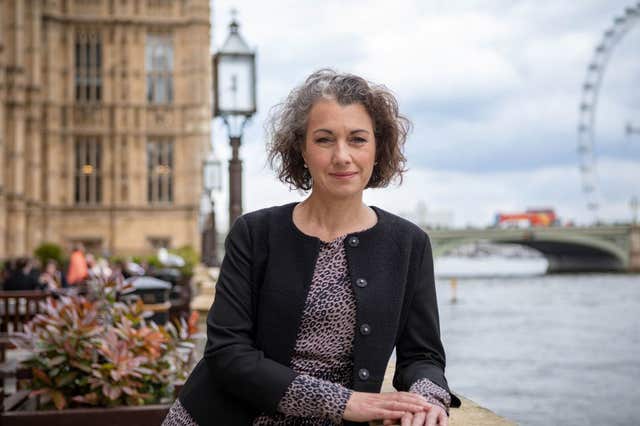
The amount of overseas aid funding diverted to support refugees in the UK rose to £4.3 billion last year, new figures have shown.
Provisional statistics published on Wednesday showed spending on “in-donor refugee costs” rose by £600 million in 2023, while the overall aid budget increased by around £2.6 billion.
Aid spending on refugees in the UK amounted to more than a quarter of the UK’s total aid budget for the second year running, although its share of the overall budget fell slightly from 28.9% to 27.9%.
International rules allow countries to count first-year costs of supporting refugees as overseas development assistance (ODA).
But the practice has been criticised for reducing the amount that can be spent on developing countries, with MPs on the Commons International Development Committee accusing the Home Office of conducting “raids” on the ODA budget.
As in previous years, the Foreign, Commonwealth and Development Office (FCDO) said the majority of the increase in spending on refugees was “due to Home Office spend”, which rose by £559 million in 2023.
International Development Committee chair Sarah Champion said the increasing spend on refugee costs in the UK was “deeply worrying”.
She told the PA news agency: “We have expressed our concerns on a number of occasions and ministers are still not listening.
“Almost 30% of our aid is being spent on refugee costs – nearly five times our bilateral spend on emergency international humanitarian aid. We do not believe that UK ODA is being spent in the spirit of the OECD rules.”
Shadow international development minister Lisa Nandy said it “beggars belief” that the Government was using the ODA budget to “bail out their failing asylum system with a blank cheque”.
She said: “This is sticking plaster politics at its worst, terrible value for money for British taxpayers and is no way to run the development budget or the Home Office.”
Tamsyn Barton, chief commissioner of the Independent Commission for Aid Impact (ICAI), said allowing the Home Office to spend “an unlimited amount” on hosting asylum seekers at the expense of the FCDO’s budget “sets the wrong incentives” and raised concerns about value for money.
She added: “What’s more, using so much of the aid budget on UK asylum hotels, rather than on supporting people nearer home, is inequitable and inefficient.”
ICAI has previously warned that the passing of the Illegal Migration Act might mean that people arriving by irregular routes were no longer eligible for UK aid, and issue Ms Barton said “appears still to be unresolved”.
News that the amount of ODA being spent in the UK had increased again has been criticised by the international development community.
Gideon Rabinowitz, from the UK aid NGO network Bond, said the Government “seems to have lost its grip on UK aid spending”, weakening Britain’s ability to respond to global crises.
He said: “INGOs are once again seeing vital funding for emergency support programmes in Somalia, Yemen and elsewhere being cut or held back, and we suspect this is due to escalating Home Office asylum costs taking an increasing chunk of the UK aid budget.
“The Government must stop seeing the UK aid budget as the primary pot for this spending given that it is legally required to support poverty reduction in lower-income countries.”
Ian Mitchell, senior fellow at the Centre for Global Development, said the figures underlined the UK’s “poor and deteriorating” record for spending on locally-led development, with around half the bilateral aid budget now being spent in Britain.

A UK Government spokesperson said: “The UK spent over £15 billion on development last year, including on life-saving humanitarian aid in Gaza, in Sudan following the coup, and in Turkiye and Syria after the earthquake.
“Our spend in 2023 also helped fragile states to access finance, millions of women globally to receive family planning support and is tackling the effects of climate change. We are also nearly doubling our spend in low-income countries this financial year.
“Last year’s budget was boosted by additional funding to support refugees in the UK, who have escaped oppression and conflict overseas, including from Ukraine and Afghanistan. We will continue to ensure our aid budget delivers value for money for British taxpayers.”
On Wednesday, the Home Office also announced that it would close more asylum hotels in the coming weeks, bringing the total number of hotels returned to normal use to 150 by the beginning of May.
The number of asylum seekers being housed in hotels has fallen by more than a third over the past six months, as the Government moves residents into private rented accommodation and “large sites” such as the Bibby Stockholm barge.
The Home Office added that it expected to reach an agreement in the coming weeks on the use of the former RAF Scampton, in Lincolnshire, after objections from the local council. The department has already agreed to reduce the number of asylum seekers it intends to house there from 2,000 to 800.

Overall, the UK spent £15.4 billion on overseas aid in 2023, equivalent to 0.58% of GDP and the highest proportion of national income spent on aid since 2021 when the Government said it would temporarily reduce its target for aid spending from 0.7% of GDP to 0.5%.
Much of the increase came from spending through multilateral channels such as the World Bank, which rose 75% to £5.5 billion thanks in part to the FCDO delaying several large payments from 2022 to 2023.
Bilateral aid spending by the FCDO fell by £460 million, primarily due to a reduction in spending on aid to Asia.
Africa remained the main recipient of bilateral aid from the FCDO, receiving £1.1 billion – roughly the same amount as in 2022.
The amount of bilateral aid spent on humanitarian assistance fell from £1.1 billion to £888 million.
Ms Champion welcomed the increase in overall aid spending, but said it was still “far short of the Government’s manifesto commitment”.
She added: “We can see from the significant cuts in programming in Asia, as well as those to humanitarian assistance, that much more aid is needed internationally so there is little in these figures to celebrate.”
The figures come ahead of a report by the Refugee Council, expected to be published on Thursday, warning that refugee homelessness had increased by 239% between 2021 and 2023.
Enver Solomon, chief executive of the Refugee Council, said the process refugees face on being granted asylum was “setting them up to fail from the very start”, with successful asylum seekers having only 28 days to find a new home before being evicted from asylum accommodation.

Enjoy the convenience of having The Sunday Post delivered as a digital ePaper straight to your smartphone, tablet or computer.
Subscribe for only £5.49 a month and enjoy all the benefits of the printed paper as a digital replica.
Subscribe